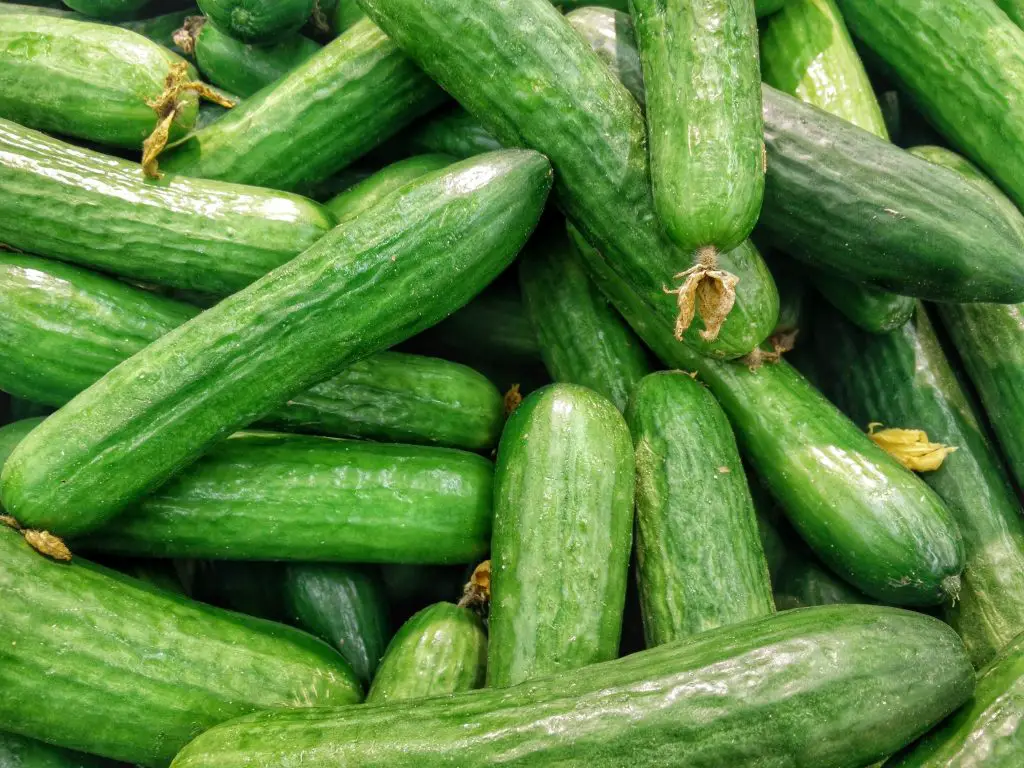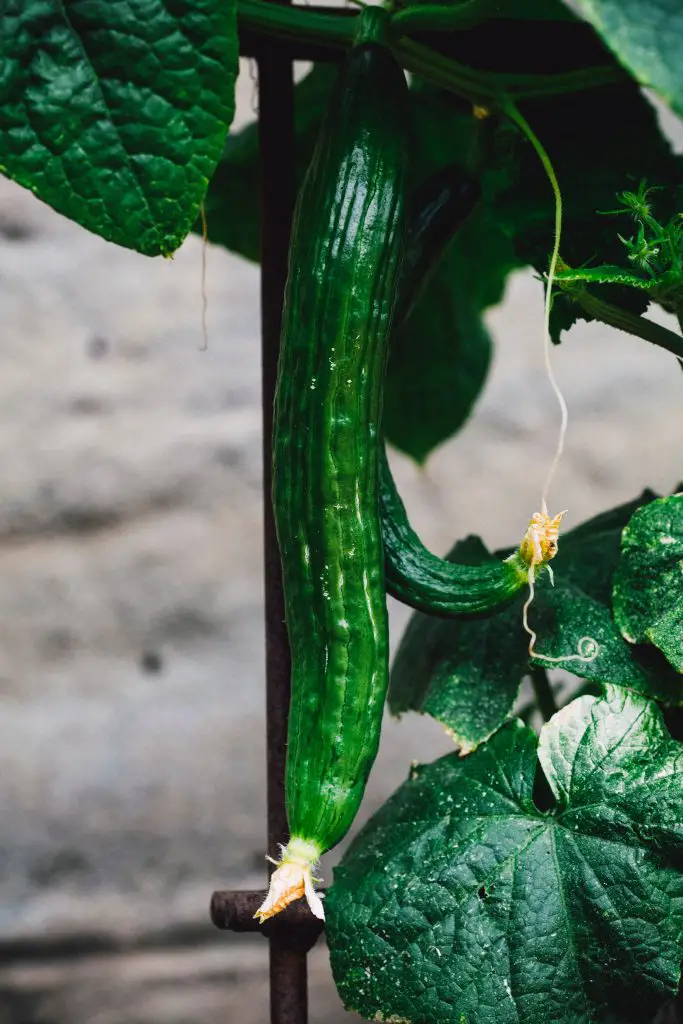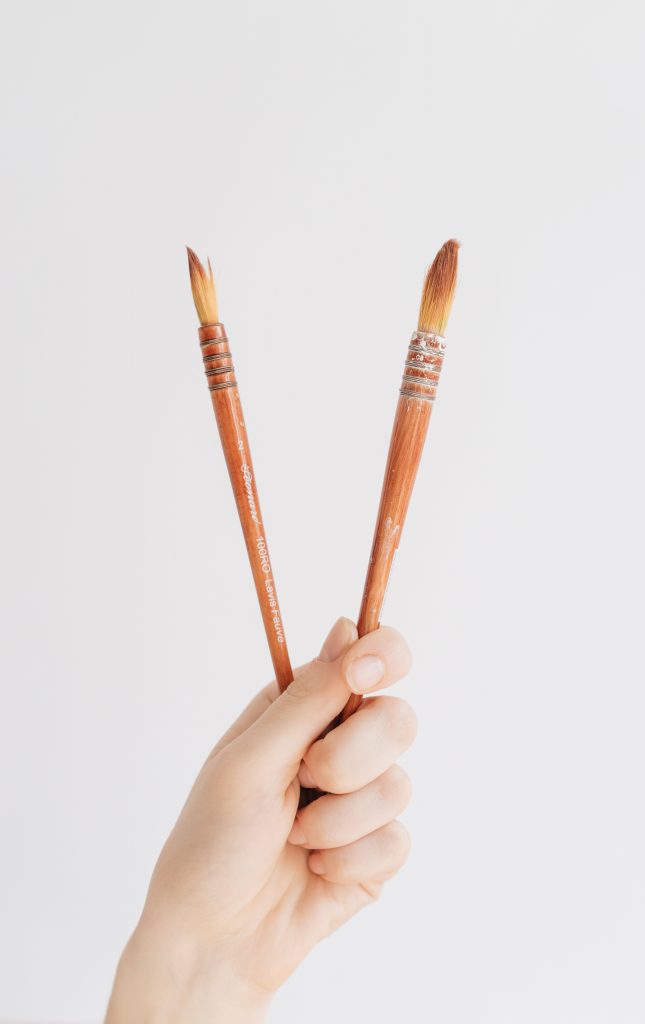Why Do My Cucumbers Bloom But Don’t Produce? There is nothing better than harvesting fresh crunchy cucumbers in Summer. Cucumbers can be prolific once they get going. However, you may also observe cucumber blossoms shrivelling up, without setting fruit, despite being placed in rich soil, and watered regularly.
The main reason this occurs, is that the fruit has not been pollinated, and as a result, the plant does not put additional energy into developing that fruit, because no seeds will develop. There can be a couple of reasons this occurs;
- The number of pollinators present is low, or they are inactive. (this can occur in rainy weather).
- The variety of Cucumber being grown is a Gynoecious type, which is a hybrid seed, that only produces female flowers on the plant.
- There is adverse climatic or soil conditions effecting the fruit production.
To determine what is causing the issue, look for male flowers on the Cucumber (there is an explanation on how to determine the difference between male and female flowers, later in the article). If there is an absence of male flowers, you need to plant a second variety of Cucumber that produces male flowers (Monoecious type). If male flowers are present, hand pollination will be required to ensure the production of fruit.

How Do The Types Of Cucumbers Effect Cucumber Production?
Cucumbers can be divided up into 3 types Monoecious, Gynoecious and Parthenocarpic. Depending on the type of Cucumber, you may need more than one Cucumber plant for pollination and fruit.
Monoecious types, produce both male and female flowers on the plant. However, despite the plant producing both male and female flowers, they do not necessarily produce flowers at the same time. It is common in Cucumbers, for the male flowers to appear first, sometimes a week or two, prior to the female flowers appearing. This timing difference can sometimes result in poorer pollination.
Gynoecious types, generally have only female flowers on the plant, though in some cases, a few male flowers may appear. The primary advantage of these types of Cucumbers is that it produces more female flowers, which provides an opportunity to get a higher yield per plant. These types are commonly used in commercial production for this reason.
The disadvantage of Gynoecious varieties is that it is not self-pollinating and requires a second variety for pollination, as there are no male flowers (or very few present on the plant). Additionally, the majority of these types of plants are F1 Hybrids, which prevents you from collecting the seeds for the following year. To learn more about this, go to https://planyourpatch.com/what-is-an-f1-hybrid-seed/.
Alternatively, try visiting our vegetable database which contains information on a range of different varieties that are available commercially. Some examples of Gynoecious Cucumber varieties include Bristol, Citadel, and Olympian.

Parthenocarpic type is a Cucumber that can produce fruit without pollination, however, the fruit produced contains no seed. The primary benefit of this variety is that you can get fruit without the need for pollination, which is advantageous when growing Cucumbers in a greenhouse.
The key disadvantage is that there are no seeds in the fruit, which does not allow seeds to be saved for the following year. A couple of common Parthenocarpic varieties are Sweet Success, Diva, Nokya, Tasty Jade, and Telegraph.
There is a wide variety of Cucumber varieties available in the US from Seeds Now and Seeds for Generation that are all heirloom varieties. This will allow you to save the seeds for the following year.
How To Increase The Fruit Production of Cucumber Plants
To improve the fruit production of the plants there are two basic things that need to be done. The first is to increase the number of male flowers available and the second important factor is to increase the pollination rate of the female flowers.
How To Increase The Number Of Male Flowers On Cucumbers
The most effective method to increase the number of Monoecious plants grown in your garden. As these varieties produce both male and female flowers this will inherently increase the number of male flowers present.
As male flowers are able to pollinate many female flowers you only require a few plants to make a significant difference. However, it is important to note, as mentioned above that there is a slight timing difference in the production of male and female plants that can affect pollination.
Due to these factors, I generally recommend planting a couple of different varieties of monoecious plants to increase the chances of an overlapping flowering period occurring.
How To Increase The Rate Of Pollination
The presents of more flowers generally will often fix the issue of lack of fruit. However, to avoid any chance there being a second season will limited fruit there are a couple of things that can be done, with the most obvious being hand pollination of the flowers.
If you have many plants it may also be advisable to try hand pollinating a few of them rather than all of them to ensure that you get some fruits while at the same time you are able to assess the performance of those plants that have not been hand-pollinated. This will allow you to gauge whether it is necessary to hand pollinate in subsequent years.
How To Hand Pollinate Cucumbers
The easiest way to hand pollinate Cucumbers is by using a fine paintbrush. The paintbrush is an effective tool for transferring pollen from Male to Female flowers, and an example of the type of brush is shown in the picture below.

Steps To Hand Pollinate Cucumbers
- To pollinate, locate the Male Flowers on the Cucumber vines (see the section below on how to tell the difference between male and female flowers). Gently push the brush into the center of the flower, rotating it a few times to pick up as many pollen grains as possible.
- Place the brush with the collected pollen onto the central part of the Female blossom, and gently move the tip of the brush over the flower. This will ensure that the pollen grains have transferred onto the Female flower.
- Dip the paintbrush into another Male Flower, and continue the pollination process. Normally, there is many more Male Flowers than Female Flowers, however, if this is not the case, it is possible to return to the same Male Flower, to get additional pollen.
Alternatives To Hand Pollination
An alternative to hand pollination is using a “Blossom Set” spray to pollinate your Cucumbers available on Amazon. This spray provides Kinetin, a plant hormone, which causes flowers on Cucumbers to produce fruit, without pollination. It is best to apply it once a week, to the flowers and surrounding foliage when flowers appear.
How Do You Tell The Difference Between Male And Female Flowers?
The easiest way to tell if a flower is a Female is it will have a small undeveloped fruit that is sitting behind the flower. The fruit will not develop unless pollinated. Additionally, the flower will appear by itself, not in a cluster of flowers.
Male cucumber flowers have shorter and thinner stems supporting the flower, and they often appear in groups of 3 to 5 flowers. Their sole job is to provide pollen for the female flowers, they will not produce any fruit. Some examples of Monoecious varieties include Marketmore, Itachi Lemon, and Striped Armenian.
Other Factors The Affect Flowering
In addition to the choice of plant, the other factors that can affect the performance are the general climatic conditions and the nutrients in the soil.
The temperature can significantly affect the flower formation for cucumber plants. If you live in regions that are prone to unpredictable late frosts your plants are at greater risk. In cold temperatures, below 50 degrees Fahrenheit (10 degrees Celsius) slow growth can occur at along with the potential for plant damage. A frost will kill cucumbers.
This variation in temperature can also affect the timing of the flowering and the type of flower produced. When it is hot, a cucumber plant tends to produce more male flowers. At cooler temperatures, a cucumber plant produces more female flowers.
To reduce the chances of issues with cold weather it is advisable to use a row cover as this will protect the plants from frost and cold weather. If you don’t own one the product we recommend is the Growsun Garden Tunnel Plant Cover because it is relatively tall and has hoops that can be anchored deeply into the ground which allows it to resist wind. The product is shown in the image below.

Nutrients in Soil
Cucumbers plants are known to be relatively heavy feeders and require significant nutrients. However, adding too much fertilizer to the soil can result in the roots being burnt. Additionally, excess amounts of nitrogen can result in the plant producing more leaves which can delay the onset of flowers production.
To avoid this problem it is best to add compost to the soil rather than fertilizer as this generally provides the plant with a broad range of nutrients but not excessive amounts of nitrogen.
Relevant Articles
Can You Pick A Cucumber Too Early?
How many cucumbers grow in a container?
How Many Cucumbers Will A Plant Produce?
What Makes Cucumber Turn Yellow? And Are They Still Edible?
